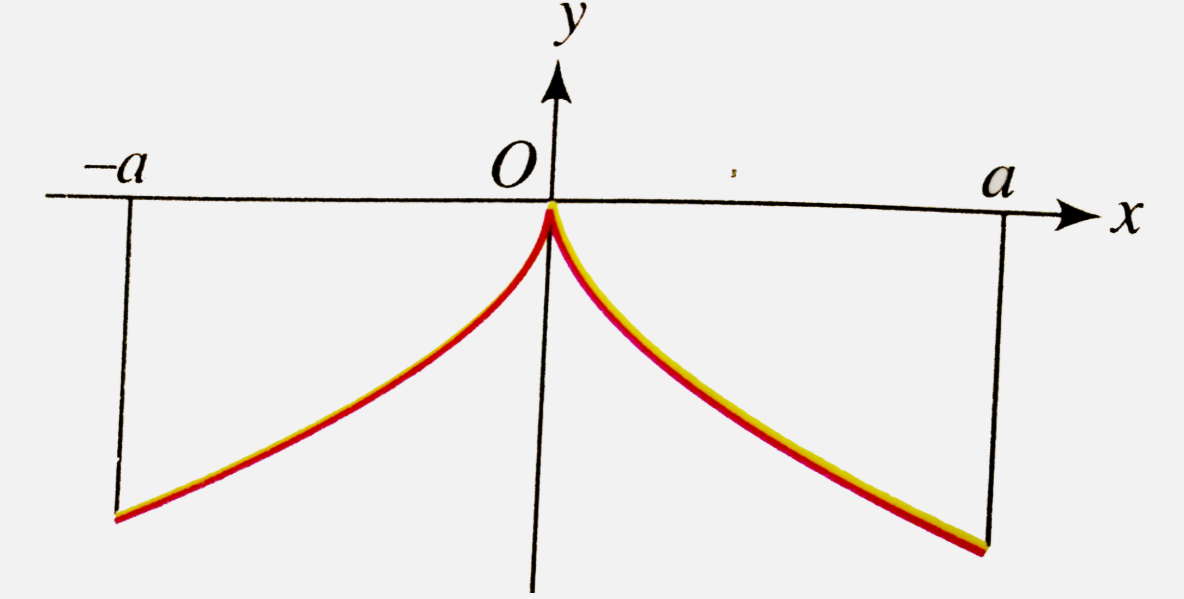Evalute [limx→0sin−1xx]=1, where[⋅] represets the greatest interger function.Solution in Bengali
See the graphs of y=x and y=sin−1x in the following figure.

For f(x)=sin−1x∴f'(x)=1√1−x2
f'(0)=1
So the curvetouches the line y=x at x=0.
For 0<x<1,f'(x)>1
So the graph of y sin−1x lies above the graph of y=x.
From the graph, when x→0+, the graph of y=sin−1 is above the graph of y=x
or sin−1x>x⇒sin−1xx>1⇒[limx→0+sin−1xx]=1
When x→0−, the graph of y=sin−1x is below the graph of y = x
or sin−1x<x⇒sin−1xx>1(as x is negative)⇒[limx→0+sin−1xx]=1
Thus, [limx→0+sin−1xx]=1
Topper's Solved these Questions
- GRAPH OF INVERSE TRIGONOMETRIC FUNCTIONSBOOK - CENGAGE PUBLICATIONCHAPTER - GRAPH OF INVERSE TRIGONOMETRIC FUNCTIONSEXERCISE - Exercises
18 Videos
- GETTING STARTED WITH GRAPHSBOOK - CENGAGE PUBLICATIONCHAPTER - GETTING STARTED WITH GRAPHSEXERCISE - Exercises 1.18
1 Videos
- GRAPHICAL TRANSFORMATIONSBOOK - CENGAGE PUBLICATIONCHAPTER - GRAPHICAL TRANSFORMATIONSEXERCISE - ILLUSTRATION
78 Videos
Similar Questions
Draw the graph of y=tan−1x−cot−1x.
View SolutionFollowing is the graph of y = f'(x) and f(0) = 0 .

(a) What type of function y = f'(x) is ? Odd or even?
(b) What type of function y = f(x) is ? Odd or even?
(c) What is the value of ∫a−af(x)dx?
(d) Has y = f(x) point of inflection?
(e) What is the nature of y = f(x)? Monotonic or non-monotonic?
View SolutionPlot y=|x|,y+x−2∣,andy=|x|2∣
View Solutionlimx→0[sin(sgn(x))(sgn(x))], where [.] denotes the greatest integer function, is equal to
View Solutionlimx→0[(1−ex)sinx|x|] is (where [.] represents the greatest integer function )
View SolutionEvalute [limx→0sin−1xx]=1, where[⋅] represets the greatest interger function.
View SolutionSolve (i) limx→0+[tanxx]
(ii) limx→0−[tanxx]
(where [.] denotes greatest integer function)
View SolutionSolve limx→0[sin|x|x], where e[.] denotes greatest integer function.
View SolutionSolve limx→0[sin|x||x|], where [.] denotes greatest integer function.
View SolutionThe value of limx→0sin[x][x] (where [.] denotes the greatest integer function) is
View SolutionProve that [limx→0tan−1xx]=0, where [.] represents the greatest integer function.
View Solutionlimx→0[sin(sgn(x))(sgn(x))], where [.] denotes the greatest integer function, is equal to
View Solutionlimx→0[(1−ex)sinx|x|] is (where [.] represents the greatest integer function )
View SolutionEvalute [limx→0sin−1xx]=1, where[⋅] represets the greatest interger function.
View SolutionSolve (i) limx→0+[tanxx]
(ii) limx→0−[tanxx]
(where [.] denotes greatest integer function)
View SolutionSolve limx→0[sin|x|x], where e[.] denotes greatest integer function.
View Solution
